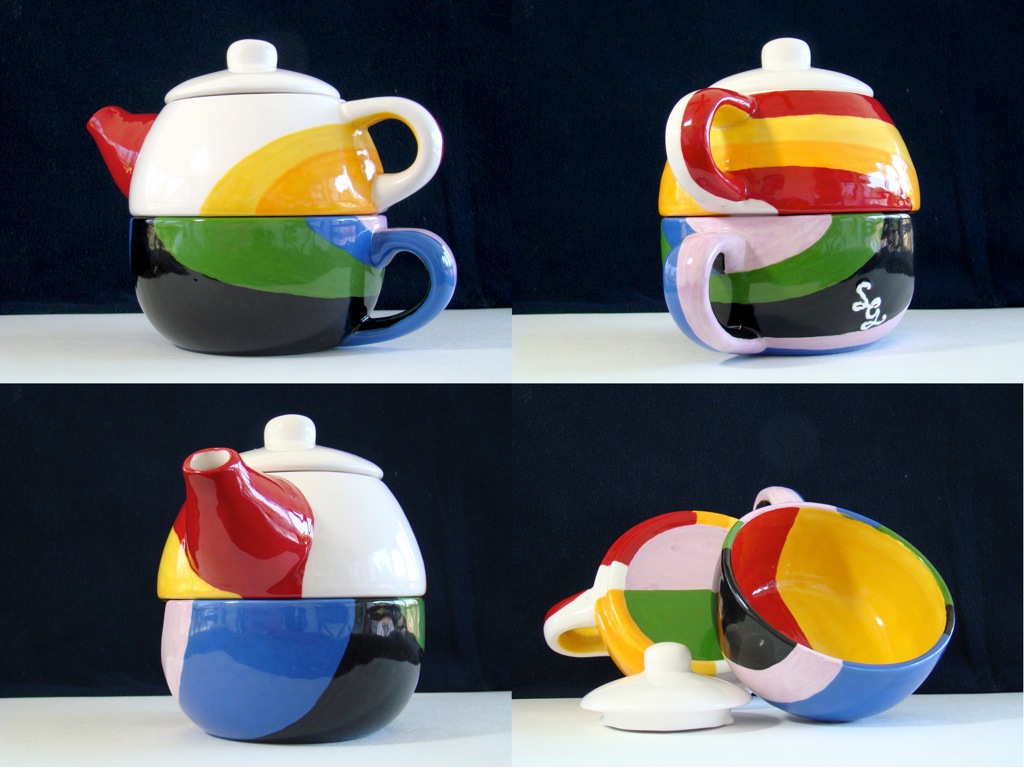Tea for Eight
Glaze on commercial ceramic
2010
Joint Mathematics Meetings Exhibition of Mathematical Art, New Orleans, January 2011

The Four-Color Theorem says that we can color any map on a plane or sphere with only four colors so that no neighboring countries are the same color. On other surfaces, we may need more colors; on a two-holed torus, eight colors are sufficient, and there are maps that require all eight colors.
When this tea set is stacked with the handles aligned, it forms a topological two-holed torus with a map of eight countries, each of which touches all of the others, proving that eight colors are necessary. The teapot has white, red, orange, and yellow countries, and the teacup has black, green, blue and purple countries. At the seam between the pieces, each of the top colors touches each of the bottom colors.
On one-holed tori, such as the teapot and the teacup, seven colors are required for an arbitrary map. Unfortunately, a seven-color map is incompatible with the tea set's exterior pattern; when the tea set is opened, hidden colors give six-color maps of the teacup and the teapot.
The Bridges 2014 proceedings paper Capturing Eight-Color Double-Torus Maps describes the design process for the tea set.